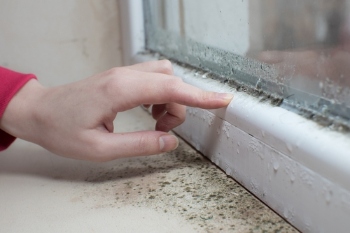
Deborah Matthews, Managing Director for MRI Living for Social Housing at MRI Software, looks at how arming onsite teams with the right technology and approach can empower social housing providers to be proactive on black mould.
It has been a tough year for many social housing residents, with outbreaks of black mould making life difficult for many. It is a problem that most housing associations, local authorities, and landlords have dealt with before, but it was made worse last winter in many cases by fuel poverty due to the rising cost of living and high energy costs. As a result, many UK social housing residents faced damp and cold living conditions – creating the ideal setting for black mould to take root and thrive.
The problem has emerged as a top priority for social housing providers across the country. To address the issue effectively, many are looking at modern technology to enable them to proactively act on black mould outbreaks – not just to treat the problem, but to pre-empt it wherever and wherever possible.
The government published an official report in Q1 called Damp and Mould in Social Housing: Initial Findings that highlighted the full extent of the problem. The report found that 3-4% of the four million social housing homes in the UK – as many as 160,000 – have at least some notable damp and mould, with 1-2% facing a severe problem. ‘These are not acceptable conditions for tenants to be living in,’ the report stated.
In addition to this data, MRI Software commissioned a survey of 5,700 social housing residents in late 2022 that revealed almost a quarter (24%) of respondents were in energy bills arrears, resulting in inadequate heating for many during winter. That left many households susceptible to black mould – and to adverse health impacts, especially for children, the elderly and those with underlying conditions – and created a problem that would persist without effective action.
There is no easy solution for social housing providers. Addressing the issue for one house or flat is challenging enough, but it is incredibly difficult for providers managing large property portfolios at any one time – especially once black mould has begun to spread. Monitoring and maintaining multiple properties poses a significant challenge for providers, especially those with extensive repair and maintenance backlogs often spread across ageing housing stock.
The importance of early warning
Despite the challenges, social housing providers can take steps to leverage technology and the resources they have to create an early warning system for black mould outbreaks. Tapping into integrated repair and maintenance solutions and the expertise of the teams using them empowers providers to act fast on black mould outbreaks and identify properties at risk to pre-empt the problem. The key is early detection to prevent severe incursions.
There are essentially two types of black mould outbreak that social housing providers need to deal with. The first can be an isolated occurrence resulting from resident behaviour. For example, a resident could be regularly drying laundry in a poorly ventilated room without opening windows or turning on a fan. The second type is a more pervasive spread of black mould across several homes within a housing estate due to a broader underlying issue, such as poor built-in ventilation.
A proactive approach is the key to getting ahead of black mould issues. In the first instance, housing providers want to be able to move fast when residents report an occurrence. Even better, they want to be able to act before an outbreak is flagged.
Keeping a watchful eye
Having an early warning approach in place enables repair and maintenance teams to observe and log first-hand damp or mould outbreaks. Recording an occurrence when they do work in common areas within buildings and service individual apartments, or houses enables onsite teams to act before it becomes a severe problem that negatively impacts residents.
Repair and maintenance teams carrying out tasks such as boiler inspections or interior repairs become the eyes and ears of the housing provider and play a critical role in successfully tackling black mould. Equipping them with the tools they need to take effective action when they do spot black mould is essential. In many cases, an integrated repairs and maintenance solution allows them to note detailed follow-up actions, including identifying all at-risk properties, capturing data, and setting next steps.
Identifying possible structural issues
Repair and maintenance teams may also discover black mould outbreaks affecting multiple homes, indicating the problem is the result of how the homes were built and not resident activity. When this is the case, having the technology and data capture in place to enable a broader view of the problem is critical to dealing with these more widespread black mould outbreaks.
Technology can be crucial to onsite teams successfully combatting black mould. In addition to leveraging the software now used to maintain properties, many social housing providers are increasingly deploying new solutions such as sensors and other IoT technology to automate aspects of damp and mould detection – further bringing these challenges to UK housing under control.













